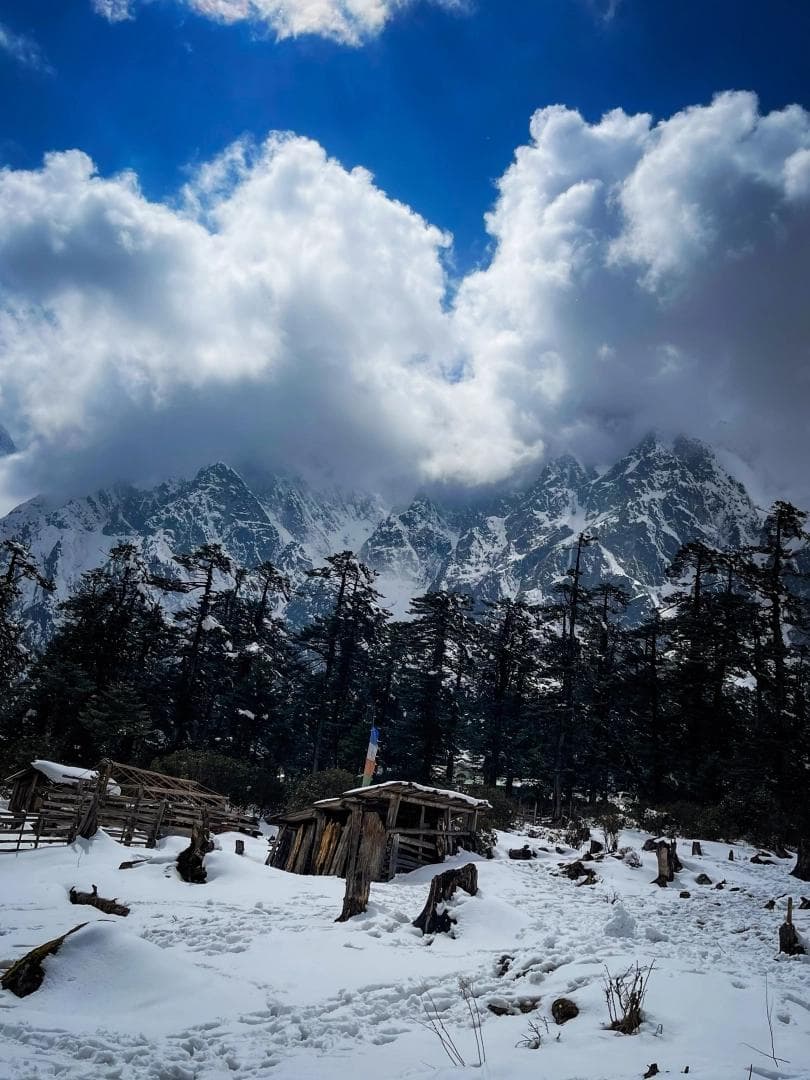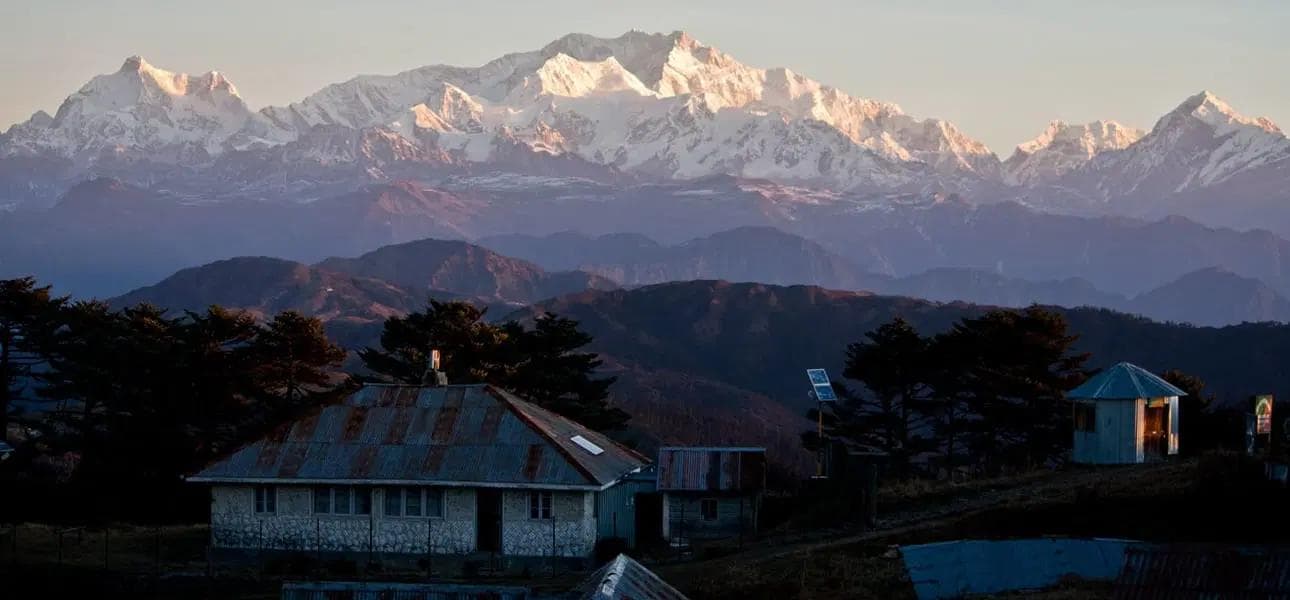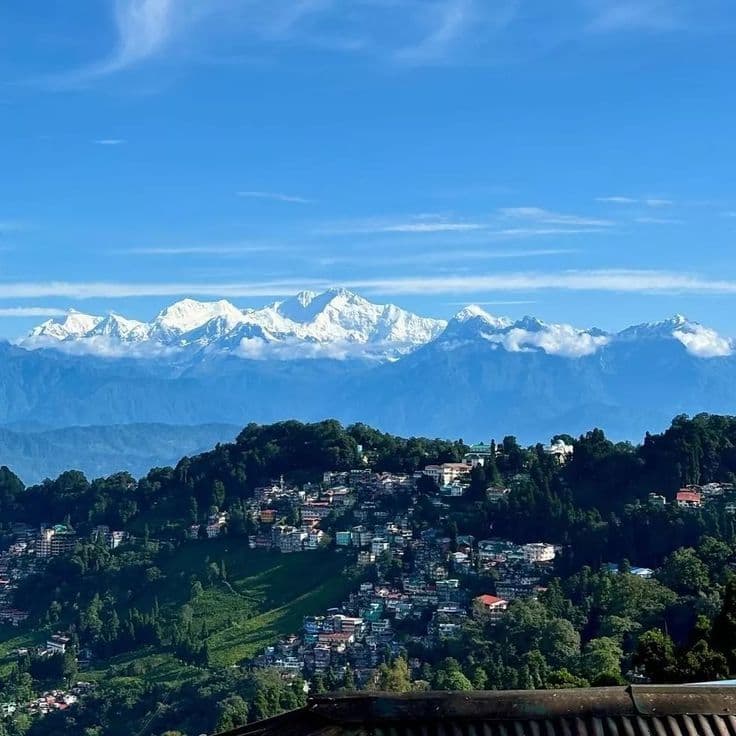
Your time in North Sikkim will lead you to four magnificent high passes. The towering Sebu La stands at 17,560 feet, and each pass shows off its own unique snow-covered views. The serene Green Lake sits at nearly 17,000 feet while the majestic Kangchenjunga peak dominates the skyline at 28,208 feet. In this article, you’ll find our carefully picked North Sikkim tourist spots with you. We'll tell you about local wisdom and give you essential tips to make the most of North Sikkim's winter landscape. Photography fans and adventure seekers will find everything they need to plan their snow-filled trip through this Himalayan paradise.
Picture yourself standing at the edge of the world's second-highest freshwater lake. The pristine Sikkim snow surrounds you at a stunning 17,800 feet. Most travellers know about Yumthang Valley, but North Sikkim has so much more to offer beyond its famous "Valley of Flowers" at 12,000 feet.
Your time in North Sikkim will lead you to four magnificent high passes. The towering Sebu La stands at 17,560 feet, and each pass shows off its own unique snow-covered views. The serene Green Lake sits at nearly 17,000 feet while the majestic Kangchenjunga peak dominates the skyline at 28,208 feet. These snow-draped wonders remain hidden from most visitors.
In this article, you’ll find our carefully picked North Sikkim tourist spots with you. We'll tell you about local wisdom and give you essential tips to make the most of North Sikkim's winter landscape. Photography fans and adventure seekers will find everything they need to plan their snow-filled trip through this Himalayan paradise.

Visit North Sikkim Tourist Spots: A Snowy Paradise
Your perfect snow-filled adventure in North Sikkim depends on what you want to experience. The winter season runs from November to early March and brings the region's most spectacular snow displays.
Winter months (November-March)
Snow seekers will find December and January the best months, with temperatures ranging from -5°C to 7°C. High-altitude lakes freeze over during this time and create stunning natural ice formations. January brings peak winter wonderland conditions as the heaviest snowfall blankets the region.
Winter changes North Sikkim's landscape in dramatic ways. Daytime temperatures stay around 7°C, while nights can drop to -5°C. The tundra region stays under snow for four months each year, and night temperatures drop below freezing.
Spring snowfall periods (March-April)
Spring months show you a different side of North Sikkim's snowy terrain. Lachung's temperatures in March range between -5°C to 15°C.
Weather patterns and accessibility
You need to think over road conditions and accessibility before planning your visit. Heavy snowfall affects transportation in higher altitude areas.
Here's what you should know about snow season travel:
- Higher altitude regions become snowbound in peak winter
- Heavy snowfall can temporarily cut off remote villages
- Weather can change without warning, and some areas get early snow
Winter brings clear weather most days, though higher altitudes see occasional snow. The Border Roads Organisation keeps vital routes open, and the region's infrastructure has improved by a lot. They pay special attention to the Kalep-Giagong stretch that leads to Gurudongmar Lake for safer winter access.

North Sikkim places to visit, beyond Lachung and Lachen
Kala Patthar viewpoint
Kala Patthar stands as a hidden marvel at an impressive 14,850 feet, beyond the usual tourist spots. This spot gives you some of North Sikkim's most pristine snow views all year round.
A serpentine path branches left from the Lachen-Gurudongmar road and leads straight into the stunning Chopta valley. You'll need to walk 300 to 500 metres from the parking area to reach the snow-covered terrain. The panoramic views here blend black rocks that break through pristine white snowscape.
The landscape shows these remarkable features:
- Sprawling valleys with year-round snow coverage
- Mesmerising waterfalls along the route
- Pristine powder snow perfect for winter activities
- Temperatures often dropping to 4 degrees
Mount Katao
Mount Katao is another gem that adds to North Sikkim’s breathtaking allure, at an elevation of approximately 15,300 feet. Just a short drive from Lachung, this destination offers spectacular views of the surrounding peaks and valleys. Known for its rugged terrain and rich biodiversity, Mount Katao is less frequented by tourists, making it a peaceful escape for those seeking solitude and adventure.
Visitors can embark on a moderate trek through deep snow, surrounded by towering conifers and vibrant rhododendron blooms in the summer. The scenery features:
- Expansive vistas stretching across the Eastern Himalayan range
- Opportunities to witness an array of wildlife, including yaks and various bird species
Chopta Valley in winter
Chopta Valley becomes an enchanting winter wonderland that looks completely different from its summer avatar. This frozen paradise sits at 13,200 feet and lets visitors walk over frozen rivers.
Thick snow covers everything during winter months. Alpine vegetation and meandering rivers disappear under a white blanket. The valley serves as a perfect base to view the surrounding snow-capped Himalayan peaks.
The magic peaks between December and February, though getting there can be tough. Snow blankets the landscape during this time and creates an unspoiled winter canvas for photographers and nature lovers. The valley's location on the way to Gurudongmar Lake makes it a perfect stop to explore North Sikkim's winter treasures.

Snow Adventures in North Sikkim
The perfect snow-laden landscape photos need good positioning and timing. Zero Point, one of the most picturesque North Sikkim tourist spots, widely considered North Sikkim’s main viewpoint, gives you panoramic views of the mountain range covered in white.
Best photography locations
The frozen streams near Zero Point create beautiful contrasts against pure snow that make compelling photographs. Photographers get their best shots during the golden hour when magical sunlight spreads across the snowscape.
Here are some standout spots for unique shots:
- The Jalebi Point viewpoint en route to Zero Point
- Alpine meadows with wooden huts in Chopta Valley
- Hot springs in Yumthang
- Sanglaphu Lake, a glistening water body 5km away from Zero Point
Safe hiking routes
Altitude preparation is vital for safe hiking. You need experienced drivers and sturdy 4×4 vehicles on these rugged roads. Vehicles move at 20-25 KMPH, which gives you time to adapt to the elevation.
The path from Yumthang Valley to Zero Point has its challenges and rewards. You should spend at least a couple of days in towns like Lachung before trying higher altitude treks.
Local guide recommendations
Government-approved guides are a great way to get a better and safer experience. These local experts keep you safe and show you the best spots for photos and hiking.
Guides carry medical kits and support you throughout your experience. They can also arrange equipment like stoves and utensils if you plan longer treks.
Local guides help you navigate the region's unpredictable weather. They check road conditions daily and tell you which routes are open during heavy snowfall. Their knowledge of safe spots for snow activities, especially around Katao Pass with its rare powder snow, makes your trip both safe and fun.
Here is what an Offbeat Sikkim guest has to say about their North Sikkim tour with us:
“Offbeatsikkim travel agency made our trip to North Sikkim unforgettable. Their expert planning, breathtaking destinations, and attentive service exceeded our expectations. From the knowledgeable local guides to the seamless logistics, everything was perfect. Choose Offbeatsikkim for an incredible journey through North Sikkim.”
- Jamuna Chettri

Essential Tips for Snow Exploration in North Sikkim
Snow exploration in North Sikkim needs careful planning and the right equipment. The northwestern areas can get extremely cold with temperatures dropping to -40°C. You just need to pay attention to every detail.
Clothing and gear
The right layers make all the difference in Sikkim's changing weather. A three-layer system works better than one heavy piece:
- Base layer: Thermal wear to prevent moisture buildup
- Middle layer: Wool layers to keep you warm
- Outer layer: A waterproof, breathable jacket to shield from weather
We learned that quality UV-blocking sunglasses are vital since bright sun bounces off snow-capped peaks. Your boots play a significant role too - pick waterproof ones with good grip to handle rough terrain.
Altitude preparation
High-altitude spots like Gurudongmar Lake have oxygen levels at 60-65% compared to sea level. This makes even simple tasks leave you breathless and tired. To curb altitude-related problems:
Proper acclimatisation is vital. You should spend a night in lower areas before going higher. Of course, drinking enough water helps your body adjust - regular water intake has helped travellers adapt to thin air by a lot.
Safety measures
The Sikkim police now have strict winter safety rules. Whatever your experience level, all vehicles must carry:
- Snow removal equipment
- Tyre chains to prevent skids
- Waste management supplies
The 3-year old rules set strict timelines - vehicles must clear the 3rd Mile Check Post before 10:30 am and leave by 5:00 pm. This keeps tourists safe from getting stuck after dark when it gets much colder.
Your medical kit should have simple medicines. Talk to your doctor before the trip if you have health conditions. The thin air at high altitudes can make health problems worse, so medical preparation ensures a safe trip.
Unique Winter Experiences with Locals
A traditional Sikkimese home gives you authentic winter experiences that no hotel can match. The Lachung Homestay sits at the foot of snow-capped hills and lets you see local life up close.
Homestay experiences
These mountain homes charm visitors with their rustic authenticity. The local community benefits directly from each homestay. Hosts cook delightful homemade Sikkimese organic food. You'll taste local specialities like Alu Thukpa, Gorkhay Chutney, and Potato Roll made in traditional Sikkimese style.
The balconies of these cosy mountain retreats give you amazing views of snowy peaks and the Teesta River. The rooms' wooden walls and floors create a warm atmosphere that keeps the winter chill away. Your hosts are great cooks who know indigenous plants well and love sharing stories over hot cups of tea.
These stays become special when you experience daily rituals and customs firsthand. You'll create lasting memories sharing meals with your host family under starlit Himalayan skies. The hosts help you explore the area and find hidden snow spots and cultural sites.
Traditional winter festivals
North Sikkim's winter comes alive with colourful festivals that show the region's rich culture. The festival calendar has:
- Losoong: December brings the Sikkimese New Year celebration with traditional festivities by Lepchas and Bhutias
- Red Panda Winter Festival: This December/January event features amazing cuisines from ethnic tribes, cultural carnivals, and photography contests
- Maghe Sankranti: This celebration marks winter's end and brings communities together
Monasteries take centre stage during these celebrations. Phodong and Rumtek monasteries' Losoong festival features the captivating Black Hat dance. Visitors watch monks perform traditional masked dances with spiritual chants and folk music.
These festivals show Sikkimese people's unique bond and their Himalayan customs that have lasted generations. Winter gatherings let you taste local delicacies, see handloom exhibitions, and try traditional sports like archery.
Winter festivals turn North Sikkim's snow-covered landscape into a lively celebration. Local sports events feature pole climbing competitions and archery tournaments that add excitement. Photographers get perfect chances to capture Sikkimese culture with snow-draped mountains as their backdrop.
Should you visit North Sikkim this winter?
North Sikkim shows nature's raw beauty and goes way beyond popular tourist spots. We found amazing places past the famous Yumthang Valley. A winter wonderland awaits explorers at the serene Kala Patthar viewpoint and the magical Chopta Valley.
Your snow adventure's success depends on perfect timing. The most spectacular winter magic happens in December and January. These months bring ideal temperatures to experience frozen lakes and snow-covered landscapes. Of course, you need to prepare well - from wearing layers to getting used to the altitude.
This region shines with more than natural wonders. Local homestays and winter festivals give you real glimpses of Sikkimese culture and create lifelong memories. You can experience these hidden treasures firsthand by booking your trip with offbeat Sikkim.
North Sikkim rewards adventurers who step off the usual path. Each moment adds something special to your Himalayan journey, from capturing pristine snowscapes to joining traditional festivals. This snow seeker's paradise holds secrets that await anyone ready to explore beyond familiar routes.